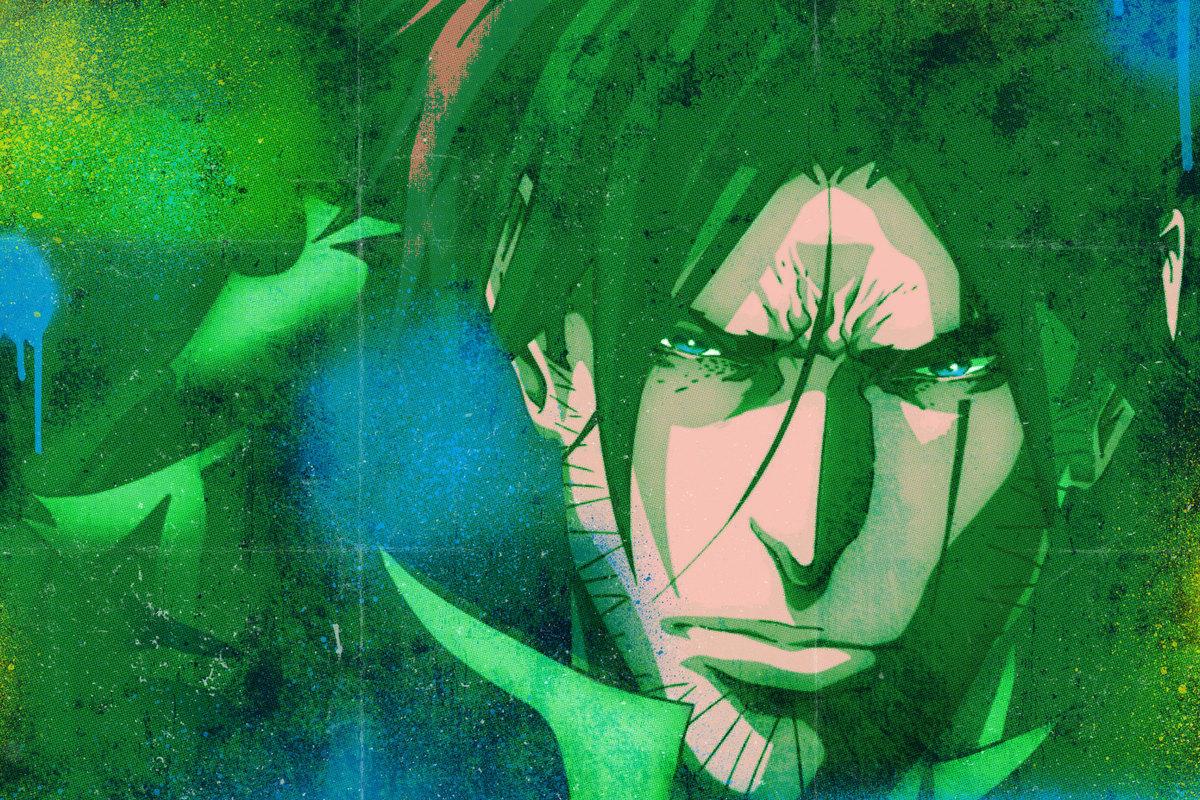
It took me until the sixth episode in the second season for me to realize I’d come to appreciate Castlevania. There’s a big, protracted battle culminating in a splashy but somewhat convoluted victory involving a teleporting castle and a sort of tesseract and also a hurricane, and right as I thought to keep my confusion to myself, a character staring into the aftermath asked, “What the fuck just happened?” This wasn’t just some bit of foul-mouthed irreverence in an edgy cartoon. It was a refreshing acknowledgment that Castlevania can be tough to follow but nonetheless easy to love.
Last week, Netflix premiered the fourth and final season of Castlevania. The series launched in July 2017, very loosely adapting the 1990 video game, Castlevania III: Dracula’s Curse. The game is only so crucial to the TV series; the show enlists the game’s heroes but otherwise develops a slate of original characters. Comic book writer Warren Ellis created and wrote Castlevania, and he once told the website Bleeding Cool, “I have never played any of the games, never even looked at them.” It’s a provocative admission. For years, fans assumed the key decision-makers in video game adaptations held the source material in contempt. Even film director Paul W.S. Anderson, a bona fide gamer, couldn’t shake this criticism in response to the many liberties he took in adapting Resident Evil into a series of live-action blockbusters. But Ellis leveraged his ignorance, and his team created something new.
Though influential in video game design, Castlevania is quite dated. Nintendo ported the first game to the original Nintendo Entertainment System in 1987, and after a legendary run in the era of side-scrolling platformers, the series stagnated by the turn of the century. Netflix’s adaptation is the biggest thing to happen to Castlevania in a long while. In fact, the decision to adapt Castlevania into a blood-splattering cartoon after all these years always seemed a bit strange for exactly this reason; how many cartoon-watching people even care about Castlevania in this day and age? But the core premise in Castlevania is simple and attractive: Let’s kill Dracula.
It’s possible to watch Castlevania with foremost attentiveness to the plot: Monster hunter Trevor Belmont—accompanied by the magician Sypha Belnades and Dracula’s dhampir son, Alucard—battle the undead army Dracula raised to eradicate mankind after fearful villagers burned his wife at the stake. In four seasons, Castlevania embellishes the primary conflict with several deaths and betrayals. But the primary conflict isn’t quite where I’d locate the intrigue and brilliance in Castlevania. Rather, Castlevania prioritizes its characterizations over the larger plot. Its characters can never resist the urge to go off on colorful tangents. The tangents always serve the characterizations but only sporadically illuminate the core story line. Dracula’s enigmatic general Isaac offers a demon a berry and launches into a bittersweet rumination about innate behaviors and human nature. Dracula’s other human general, Hector, and his allies Carmilla and Lenore haggle over the proper proportion of power and happiness in one’s aspirations. The undead viking Godbrand, a disgruntled lieutenant to Dracula, rants about humans and raves about boats. So Castlevania isn’t a series about the long struggle against Dracula so much as Castlevania is a series about friends, lovers, and strangers mulling over the meaning of life and roasting each other constantly.
There’s also the manner of animation, especially in the show’s many battles. Earlier I described the show’s premise as “Let’s kill Dracula,” but more specifically I might have said, “Let’s kill Dracula with whips, chains, and magic.” The stylish violence distinguishes Castlevania—the video games as well as the TV series—in the larger tradition of stories about Dracula. In four seasons, Castlevania never renders the same fight twice; each battle is a distinct spectacle, and each character fights with a particular rhythm and advantage. Alucard twirls and tosses his sword with an air of invulnerability, but this invulnerability is illusory, and Alucard’s opponents puncture his confidence every now and again. Sypha casts a variety of elemental spells—fire, ice, and electricity—in clever, splashy patterns. Isaac alternates between tranquility and hyperviolence, hacking limbs and slashing throats with his dagger. Castlevania is a Western production adapting a Japanese series and taking crucial cues from shonen style: defined muscles, fluid movement, and luxurious design. The little details in the characters and backgrounds go a long way. Alucard’s voice is a little too sedative, and Isaac’s backstory is a little too overwrought, but often the animation itself speaks volumes for and about these characters.
It was never a perfect series. The third season in particular gets a little too digressive for its own good. But on the whole Castlevania excelled in so many departments: the charming conversations, the ecstatic confrontations, and the exquisite detail in every texture and movement. The fidelity to the source material in Castlevania proved rather beside the point. You can be faithful to the letter of these things, or more productively you can be faithful to the imaginative spirit.

